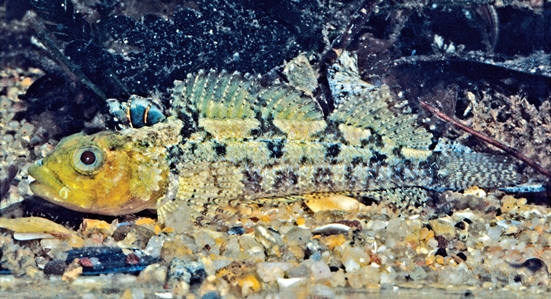General Description
Body moderately long and deep, almost cylindrical; head depressed, pointed; eyes large; orbital tentacle small, rounded and fleshy; nasal tentacle a simple lobe. Green, brown or purple above with dark blotches; head similar, or yellow or purple; first dorsal fin usually mottled with black; remaining dorsal and anal fins with diagonal lines; pectoral fin spotted. To 6 cm.
Biology
These little fishes are nocturnally active, and remain hidden during daylight hours.
Habitat
Shallow coastal waters on rocky bottoms, often under small rocks.
Reefs
Distribution guide
Southern Australia, including western and central Victoria.
Species Group
Depth
Shore (0-1 m)
Shallow (1-30 m)
Water Column
Max Size
6 cm
Commercial Species
No
Global Dispersal
Native to Australia
Conservation Status
- DSE Advisory List : Not listed
- EPBC Act 1999 : Not listed
- IUCN Red List : Not listed





